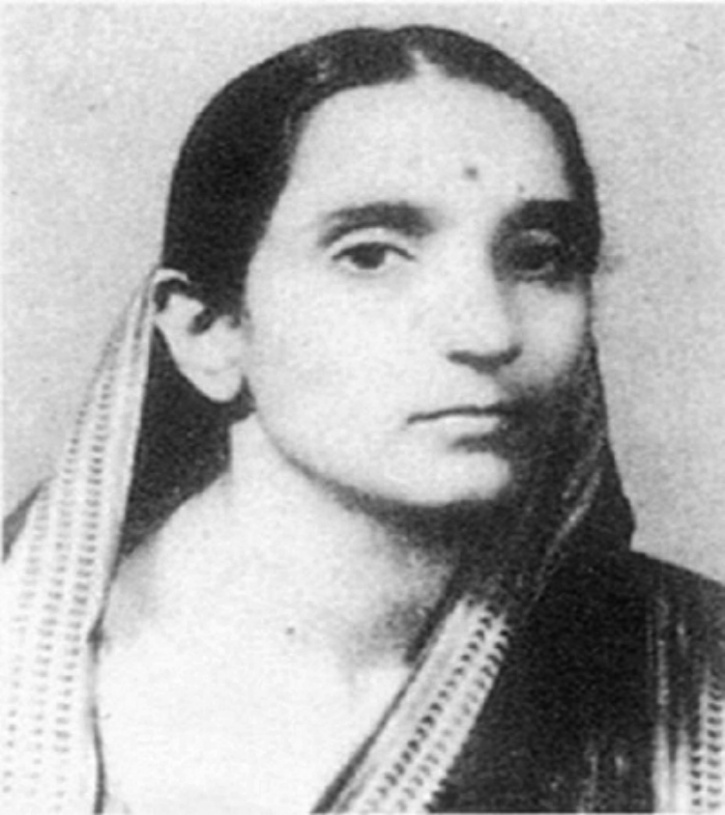Amritpal Kaur
Durgavati Devi, wife of Bhagwati Charan Vohra, has been an enigmatic figure in the saga of Indian Freedom struggle. She represents the class of female freedom fighters who remained in anonymity for the most part of our history writing in independent India, yet whose contribution was no less than their male peers. As a part of this section of women fighters, Durgavati Devi, also known as Durga Bhabhi, by the virtue of her marriage to the leading revolutionary Bhagwati Charan Vohra, stands in the first line of the revolutionary freedom
fighters of India.
Durgavati Devi was born in Allahabad and she moved to Lahore upon her marriage. Soon after her nuptials Durgavati gave birth to Sachidananda or Sachi in 1925. In the early part of her marriage Durgavati was not an active member of the revolutionary activities in Lahore of 1920’s. Instead, she was active in girl’s education in Lahore College, an activity that she remained involved until 1929, when she was forced to go into hiding. It was, when Bhagat Singh had to run away from Lahore upon Saunders killing, that we hear about her first direct involvement into the activities of revolutionaries in Lahore, Punjab.
At that point in time, Bhagwati Charan Vohra had gone to Calcutta, leaving Durgavati and their son behind in Lahore. He left a huge sum of money for her use in his absence. At the same exact moment, Bhagat Singh along with Rajguru and others had planned to kill police officer Saunders to avenge the death of Lala Lajpat Rai. Upon killing him, the revolutionaries ran towards Bhagwati Charan Vohra’s house. As a part of the revolutionary protocol, Durgavati gave them safe haven without asking any question. As a part of his escape plan, Bhagat Singh asked for Durgavati Bhabhi, and she readily decided to help him, even while knowing that their plan was unconventional and controversial. She agreed to act as his wife, with Sachi as their son. Rajguru became their luggage bearing servant, and pretending to be a young family they conned the British and left Lahore in the first-class Railway journey to Lucknow. From Lucknow Bhagat Singh sent a telegram to Bhagwati Charan that he was coming to Calcutta with ‘Durgavati’ prompting Vohra to ask: ‘Who is this Durgavati?’ Durgavati reached Calcutta and met with her husband, surprising Bhagwati Charan Vohra, who after hearing about her act exclaimed ‘I never knew that I married a Revolutionary!’
Besides helping Bhagat Singh, Durgavati Devi, along with many women in the revolutionary circles had been a ready conduit of information and help to the revolutionaries in their dire circumstances. She is known to have given shelter to the revolutionaries running from the British police, supported many families of revolutionaries. One of her acts to save Bhagat Singh from Gallows was to meet Mahatma Gandhi, in order to convince Gandhi to put the condition of saving Bhagat Singh in his Gandhi-Irwin Pact. Durgavati Devi met Gandhi in
Delhi before Gandhi’s meeting with Irwin, though Gandhi had thought that she had come to repent and join his non-violent creed. But Durgavati Devi had other plans, and she argued her case with Gandhi to save Bhagat Singh. However, Gandhi did not budge and she had to leave empty handed. At the same time Bhagwati Charan Vohra was testing bombs in the woods of Lahore, in a last desperate bid to free Bhagat Singh. Unfortunately, he met with untimely death due to an ill-fated bomb blast, leaving young Durgavati Bhabhi as his widow. Durgavati Devi bore her widowhood with grace by helping other revolutionaries.
After the death sentence of Bhagat Singh, Durgavati Devi along with other revolutionaries including Prithvi Singh and Sukhdevraj decided to commit a revolutionary act to commemorate Bhagat Singh’s death sentence. They chose Governor of Punjab, Geoffrey De Montmorency who was residing in Bombay at that point in time. However, due to the heavy security outside his bungalow, they could not take an aim at him. Instead, they decided to attack the police station at Lamington Road in South Bombay where they found ‘two Britishers’, a police officer and his wife, standing outside the station. The press termed it
‘Lamington Outrage’. Though the police officer and his wife survived the attack, the witnesses could only tell that there were three men in a car who aimed shots at the couple. No one knew that one of the shooters was a woman dressed in the clothes of a man, and this woman was Durgavati Devi. It gave her precious time to leave Bombay and avoid the police trap. It was also one of the rare moments in Indian freedom struggle where a woman had taken a direct part in the revolutionary act. Durgavati Devi even got away with it as well.
In the later part, she settled with her family in Ghaziabad near Delhi, where she ran a Girls School. The unique attribute of her, as a hidden heroine, was the fact that she never gave any interview about her role in the freedom struggle. We know about the acts that revolutionary men did, but there is a little information about the crucial role that women like Durgavati Devi played in this struggle. It is her obscurity and anonymity, which makes her a large figure, because we may never get full access to her contribution in the Indian Freedom Struggle.



